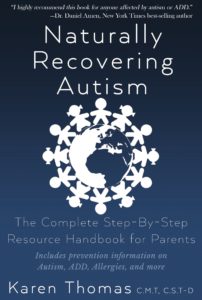One in every four children on the autism spectrum tests positive for Lyme infection. It is the fastest growing vector-born infection with 3,000,000 new cases per year, and this number is said to likely be an underestimate. Symptoms can overlap and the Lyme commonly gets missed or mis-diagnosed.
Lyme infection is usually caused by a tick bite which releases the bacteria from its saliva. We now know that other insects may carry the disease such as some spiders, biting flies, and mosquitoes. Lyme disease can also be transmitted during sexual contact, through breast milk, and in utero via the placenta. Maternal blood often has no evidence of spirochetes, but the baby may have them, often in the liver. In babies, it is common to have brain, nerve, spinal cord, and heart problems.
COMMON SYMPTOMS OF LYME DISEASE: 
- Lyme disease can mimic other disorders such as:
- Attention deficit disorder (ADD)
- Learning difficulties
- Obsessive compulsive disorder (OCD)
- Depression
- Alzheimer’s
- Schizophrenia
- Multiple sclerosis
- Chronic fatigue
- Fibromyalgia
- Heart conditions
- Bell’s Palsy
LYME’S AFFECT ON THE BRAIN
Lyme’s affect on the brain tends to:
- Shrink the putamen, involved in learning, and the release of GABA and acetylcholine, which affect the nervous and muscular systems.
- Enlarge the thalamus, which is responsible for the comprehension of language, sending and receiving all sensory signals, regulating the sleep-wake cycle and conscious awareness.
- Weaken the cerebellum, which is involved in motor coordination, attention/focus, and language.
There is a software imaging program called Neuroquant that takes images of the brain and shows the volume measurements of its different structures. This is a tool that can be used to measure the health of various parts of the brain. For some, it has been useful before and during Lyme treatment for assessment and to note changes. It is very inexpensive (about $96) compared to other imaging. This can be a useful tool. For more information visit www.radnet.com/ neuroquant.html or call (800) 975-4674.
The four bacteria that cause Lyme infection are borrelia, ehrlichia/anaplasma, babesia, and bartonella.
Common symptoms for each are:
- Borrelia: mixed symptoms starting with flu-like symptoms, arthritis, fatigue, occipital headaches (back of the head) with neck stiffness, emotional, bull’s eye (circular) rash. Usually there are four-week cycle symptom flare-ups.
- Babesia: a common co-infection includes fever, headaches, sweats, trouble breathing, and severe fatigue. Symptoms cycle every four to seven days.
- Bartonella: most symptoms are from the neck up with anxiety, sleep disturbance, and enlarged lymph nodes in under arm area. Bartonella live on cats and can inflict humans in contact.
- Ehrlichia/Anaplasma: muscle pain, headaches with sharp pain behind eyes, elevated liver enzymes, high white blood cell count, trouble remembering names or words mid-sentence.
TESTING FOR LYME
Effective testing with blood is minimal. The standard “blot” blood test often shows a false negative, especially when the immune system is weak. Testing for Lyme should be done after gut healing, and detoxification have been done. Asyra is an effective test for Lyme. It is a non-invasive bio-energetic screening and is known as the world’s number one, bio-energetic screening test. One appointment gives you the answer. You can learn more at, www.asyra.co.uk.
EFFECTIVE HERBAL TREATMENT
A known effective treatment protocol for Lyme is using quality herbal formulas specific for each Lyme bacteria.
Please learn more about Lyme, Lyme treatments and much more in my book, Naturally Recovering Autism: The Complete Step-By-Step Resource Handbook for Parents.
Follow me on Facebook!









